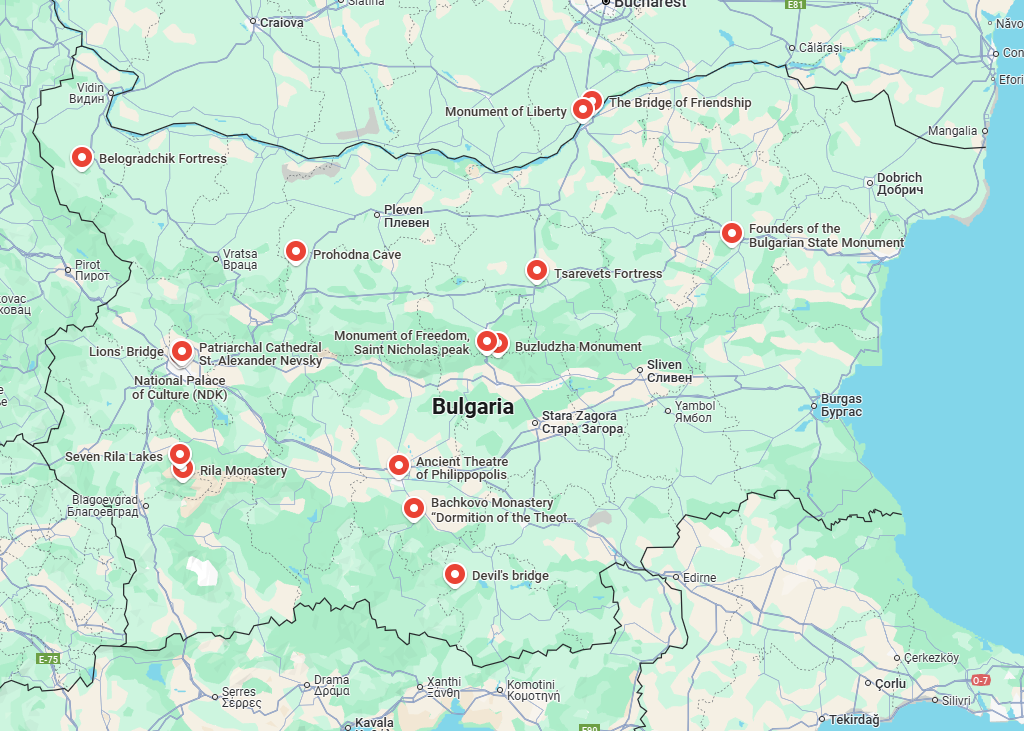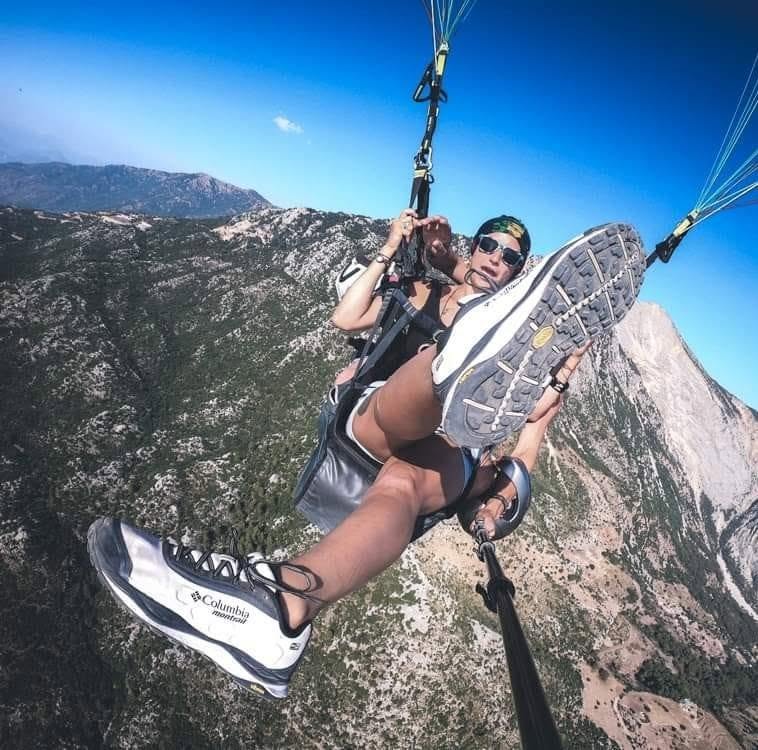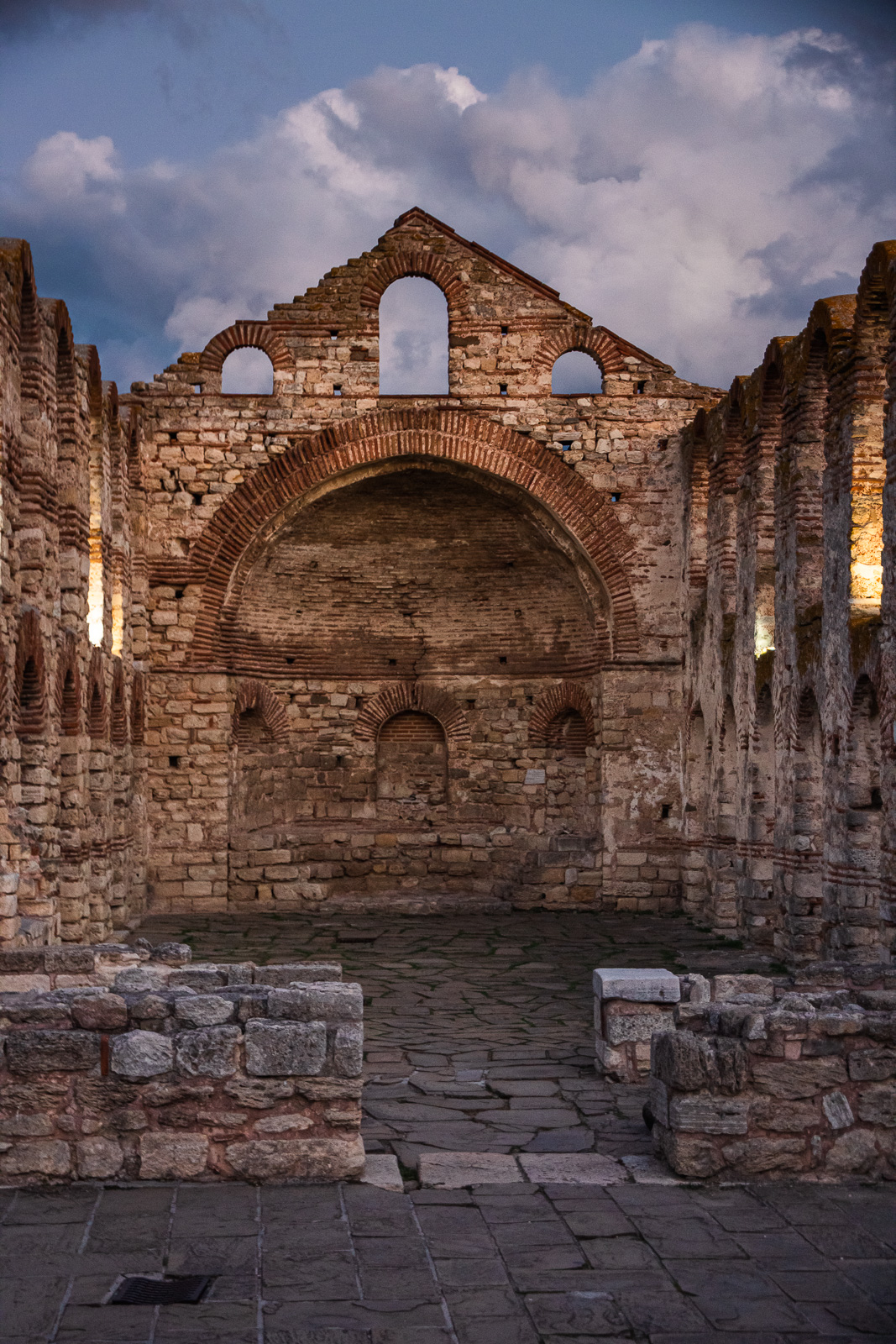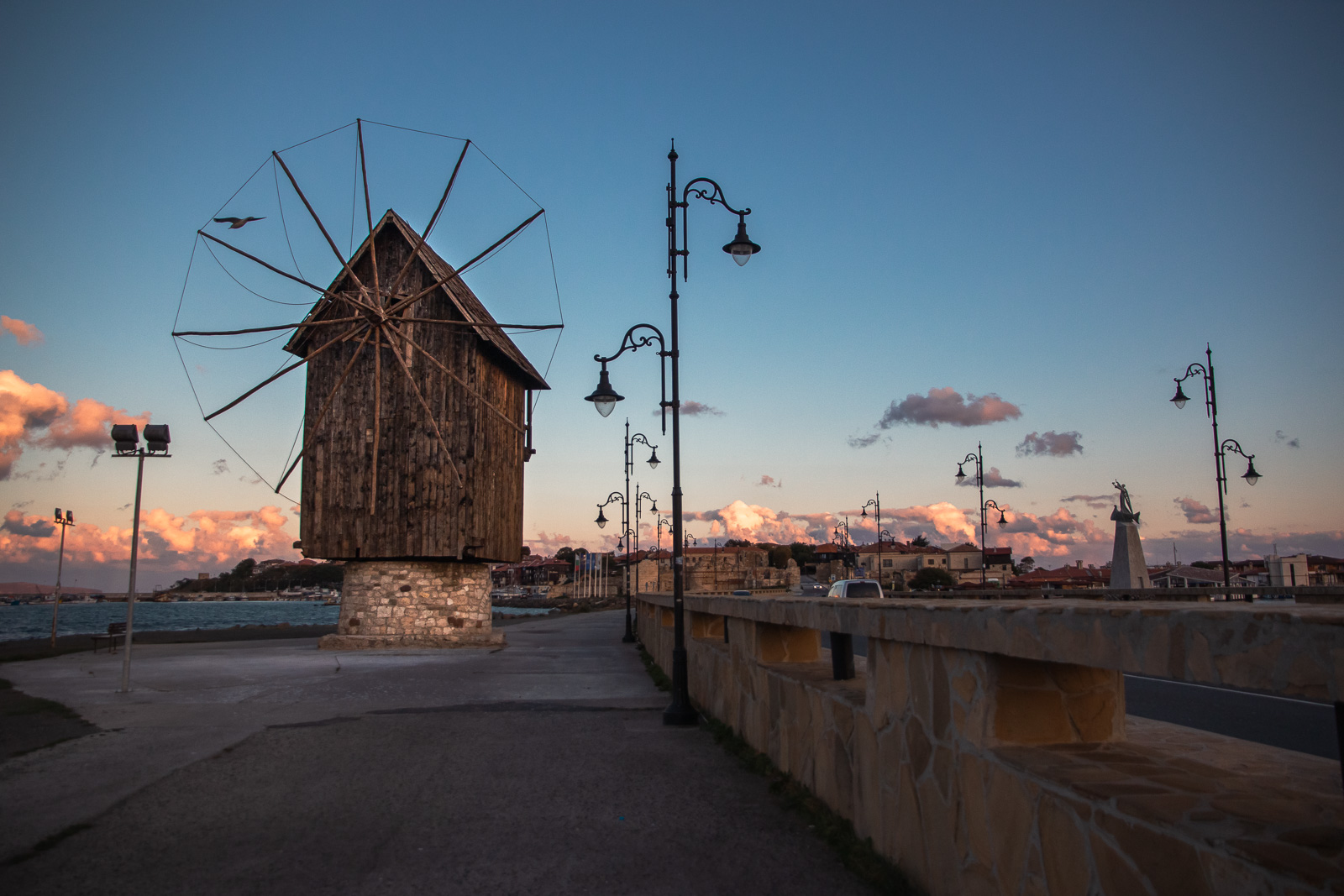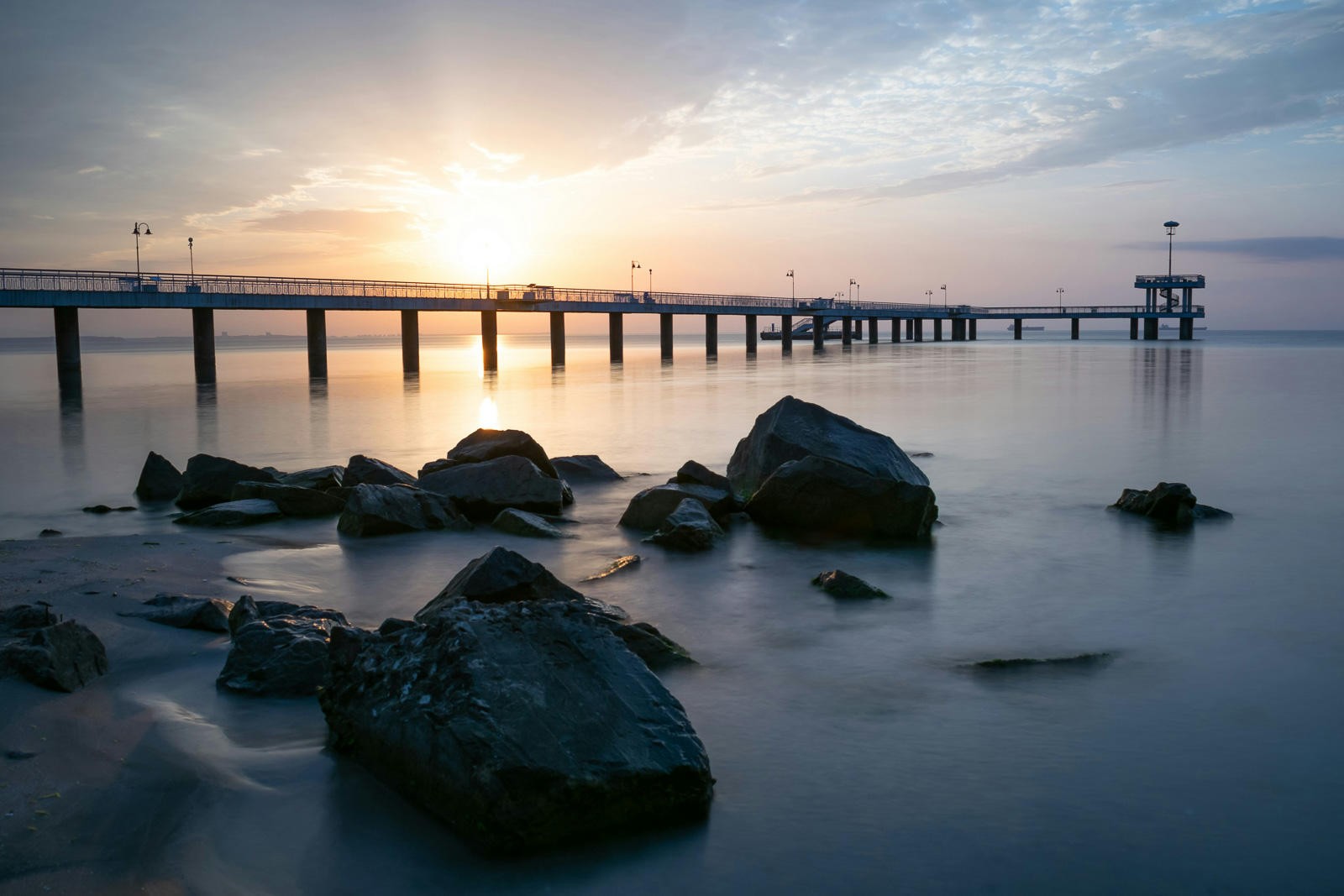17 Popular Landmarks in Bulgaria
Looking for the most iconic places in Bulgaria? This guide covers the country’s most famous landmarks – the ones that are easy to recognize, tied to important events, or simply stand out on the map.
In it, I’ll share 17 of the most well-known landmarks in Bulgaria.
Some date back thousands of years, others are more recent – and many are easy to visit without much planning. These are the places locals know well and visitors don’t forget – the ones that shape how people see the country and tell its story.
Landmarks in Sofia
Bulgaria’s capital offers a mix of historical, religious, and cultural landmarks that reflect different periods of Bulgaria’s past. Here are the top landmarks and places to visit in Sofia, Bulgaria.
1. Aleksandar Nevsky Cathedral
Aleksandar Nevsky is the largest Orthodox cathedral on the Balkan Peninsula – and easily the most recognizable building in Sofia.
The St. Alexander Nevsky Cathedral was built to honor the memory of 200,000 Russian and Bulgarian soldiers who died in the Russo-Turkish War of Liberation (1877–1878), which led to Bulgaria’s independence from Ottoman rule. That’s why it’s known as a temple-monument. It’s dedicated to St. Alexander Nevsky.
You’ll find the cathedral right in the heart of Sofia, and you don’t need to book anything or pay to walk around inside.
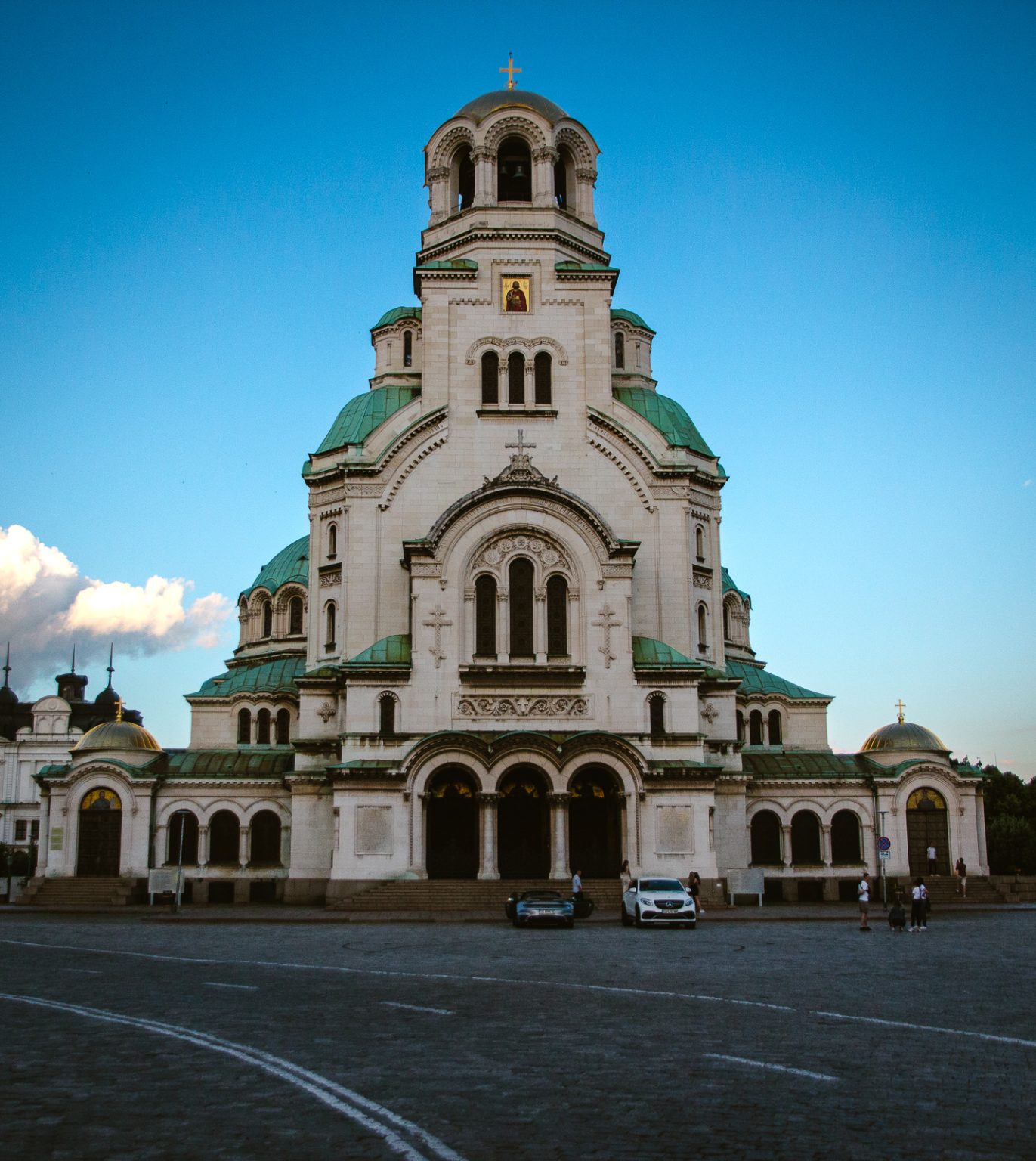
2. National Palace of Culture (NDK)
The National Palace of Culture is a massive conference and event center that’s been a landmark in Sofia since 1981. Built during the communist period, it was intended as a symbol of Bulgaria’s cultural progress.
Today, NDK hosts a wide variety of events, including:
- Concerts
- Exhibitions
- Book fairs
- Conferences and public gatherings
The building sits in the heart of Sofia, surrounded by a spacious park where locals go for walks, skateboarding, or just to hang out. If you’re spending time in the city, you’ll likely pass by it – the area around NDK is right next to Vitoshka Street, one of Sofia’s main pedestrian zones, known for its cafés, bars, and restaurants.
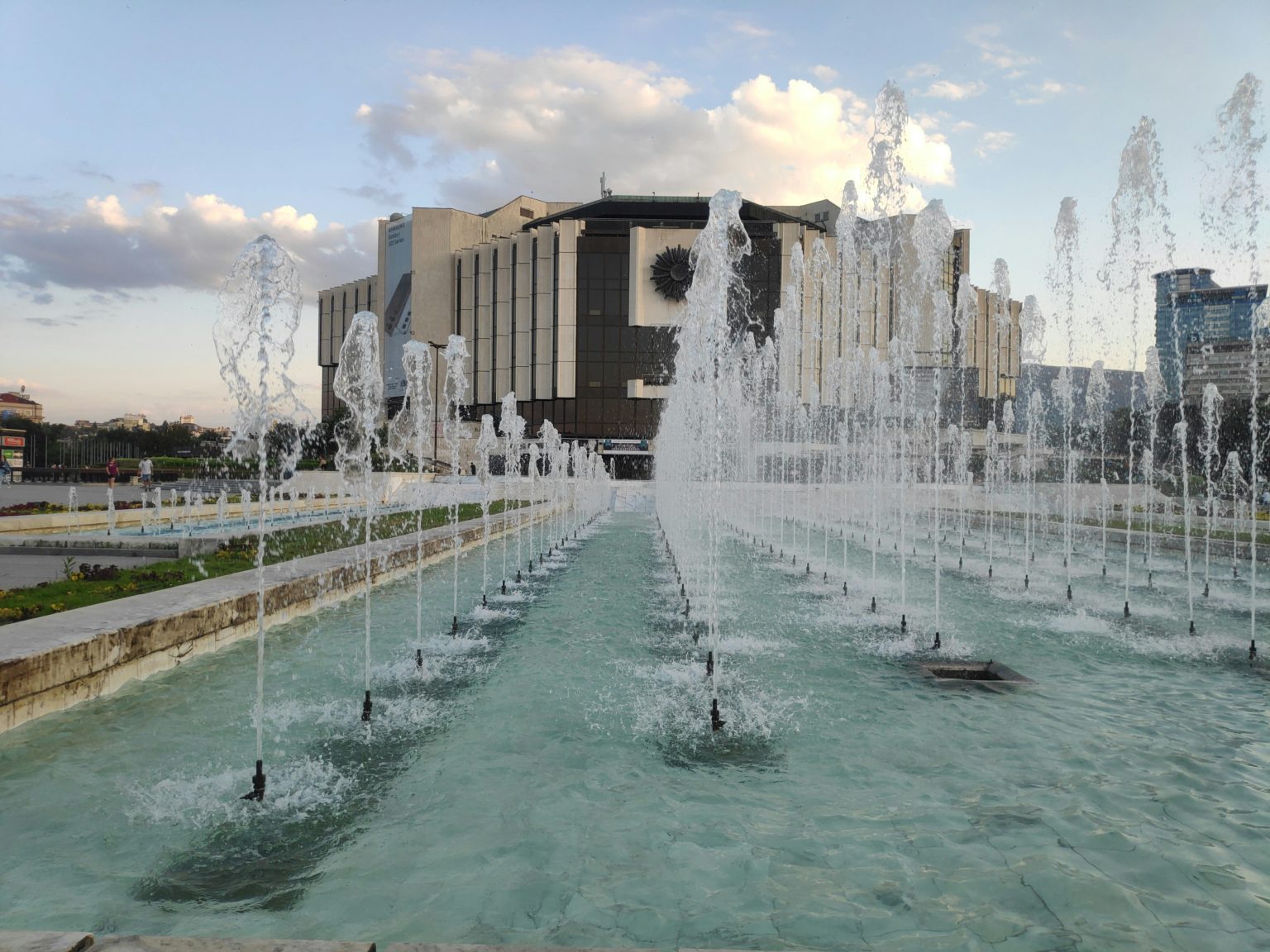
3. Lion’s Bridge (Lavov Most)
Lion’s Bridge is a historic landmark and architectural symbol of Sofia, with roots going back to ancient times. The area was once a site for public gatherings and, during the Ottoman period, a place of execution.
The current bridge was built shortly after Bulgaria’s Liberation, between 1889 and 1891, and was conceived by Hristo Danov as a memorial to fallen Bulgarians. Today, Lion’s Bridge is a busy intersection in central Sofia, linking the main bus and train stations to the city center. It’s also officially recognized as an architectural and cultural monument.
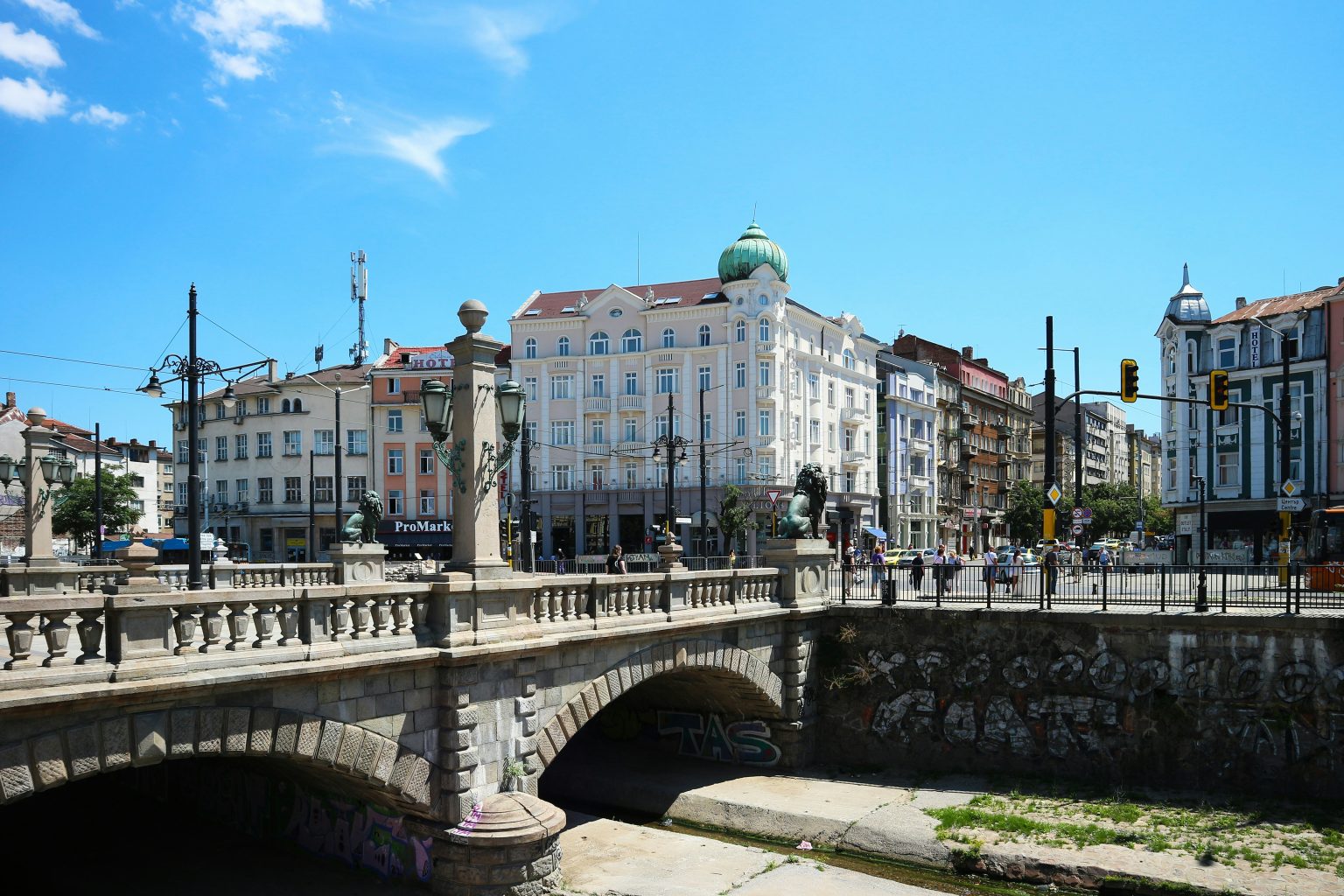
4. Eagle’s Bridge (Orlov Most)
Eagle’s Bridge is another key symbol of Sofia, representing freedom and serving as a symbolic gateway to the city. It holds historical significance as the place where Bulgarian prisoners from Diyarbakir were first welcomed home in 1878, following the Treaty of San Stefano.
Today, Eagle’s Bridge is a busy intersection and social hub in central Sofia. It’s located near Ariana Lake, Borisova Garden, and Tsar Ivan Asen II Street – a lively area that connects several major parts of the city.
Walking tour tip
You can visit all four of these landmarks on a one-hour walk through the city center.
Here’s a suggested route:
- National Palace of Culture
- Eagle’s Bridge
- St. Alexander Nevsky Cathedral
- Lion’s Bridge
Or you can do it in reverse – it all depends on where you’re staying in Sofia and where you want to finish your walk.
Natural Landmarks in Bulgaria
Bulgaria is home to plenty of natural spots that are easy to visit and don’t require special preparation or gear.
Some are located in protected areas or national parks, while others are tucked away in less touristy regions but still accessible by car or a short hike.
5. The Seven Rila Lakes
The Seven Rila Lakes are exactly what they sound like – seven glacial lakes nestled in the Rila Mountains, not far from the town of Sapareva Banya. They are among the most popular natural sights in Bulgaria, both as a landmark and for their accessibility.
To visit, you’ll first need to get to the ski lift near Panichishte. From there, take the lift up to the Rila Lakes hut (Rilski Ezera hut), where your hike begins. The trail is well-marked and passes by all seven lakes.
Each lake has a name inspired by its shape or position:
- Dolnoto ezero (The Lower Lake)
- Ribnoto ezero (The Fish Lake)
- Trilistnika (The Trefoil)
- Bliznaka (The Twin)
- Bybreka (The Kidney)
- Okoto (The Eye)
- Salzata (The Tear)

6. God’s Eyes (Prohodna Cave)
Prohodna Cave is a natural rock bridge located near the village of Karlukovo.
The cave is best known for two large holes in its ceiling that look like eyes – which is how it got the name “God’s Eyes.” It’s about 260 meters long and easy to walk through, with entrances at both ends.
There’s a paved road leading to a small parking area nearby, so you don’t need any special equipment or fitness level to visit. The cave has also become a popular spot for bungee jumping during organized events. Entry is free, and it’s open year-round.
7. Belogradchik Rocks
The Belogradchik Rocks are a group of natural sandstone and limestone formations near the town of Belogradchik, in northwest Bulgaria.
They cover a wide area and take on various shapes that locals have named after people, animals, or legends. Here, you’ll also find Kaleto Fortress, which was built into the rock formations and served for centuries as a defensive stronghold.
The site is on the Bulgarian tentative UNESCO World Heritage list. It’s open to visitors every day and has basic infrastructure. The easiest way to get there is by car, but with some adventurous spirit, you can also reach it by train or bus.
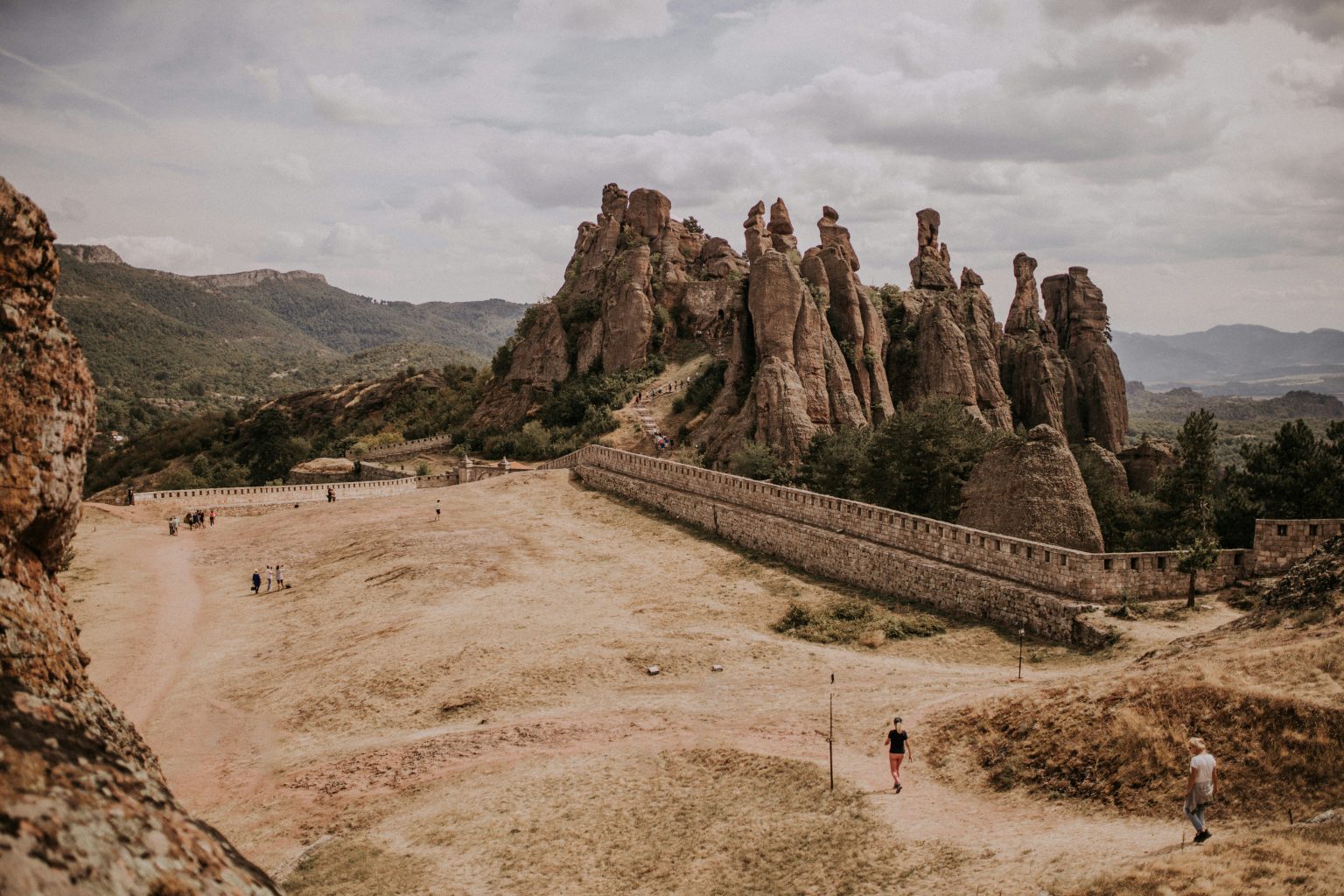
8. Devil’s Bridge (Dyavolski Most)
Devil’s Bridge is an old stone bridge and an architectural masterpiece located near the town of Ardino, in the Rhodope Mountains.
The bridge was built during the Ottoman period, probably in the early 16th century, and spans the Arda River in a remote but scenic area. Numerous legends surround the bridge and its construction. To this day, it remains fully intact and can be crossed on foot.
It’s about a 20-minute drive from Ardino, and you can park close to the bridge itself and reach it on foot. There’s an entrance fee, with a discount available if you combine the visit with nearby attractions – the Thracian Sanctuary “Eagle’s Cliffs” and the Municipal Museum of Ardino.
Historical Landmarks and monuments
Bulgaria has a long and complex history, with monuments and historical sites reflecting different eras across the country. Some date back to ancient times, others to the medieval period, and quite a few come from the 20th century and the communist legacy.
9. Tsarevets Fortress
Tsarevets is a medieval fortress in Veliko Tarnovo, the former capital of the Second Bulgarian Empire.
The complex includes fortified walls, ruins of royal buildings, and the restored Patriarchal Cathedral perched at the top of the hill. The site is well maintained and easy to explore, with clear signs and designated viewing spots.
Located right within Veliko Tarnovo, it’s easy to combine your visit to this beautiful city with a tour through time and history. In the summer, evening light and sound shows bring the fortress and city’s story to life. The fortress is open daily, with a small entrance fee.
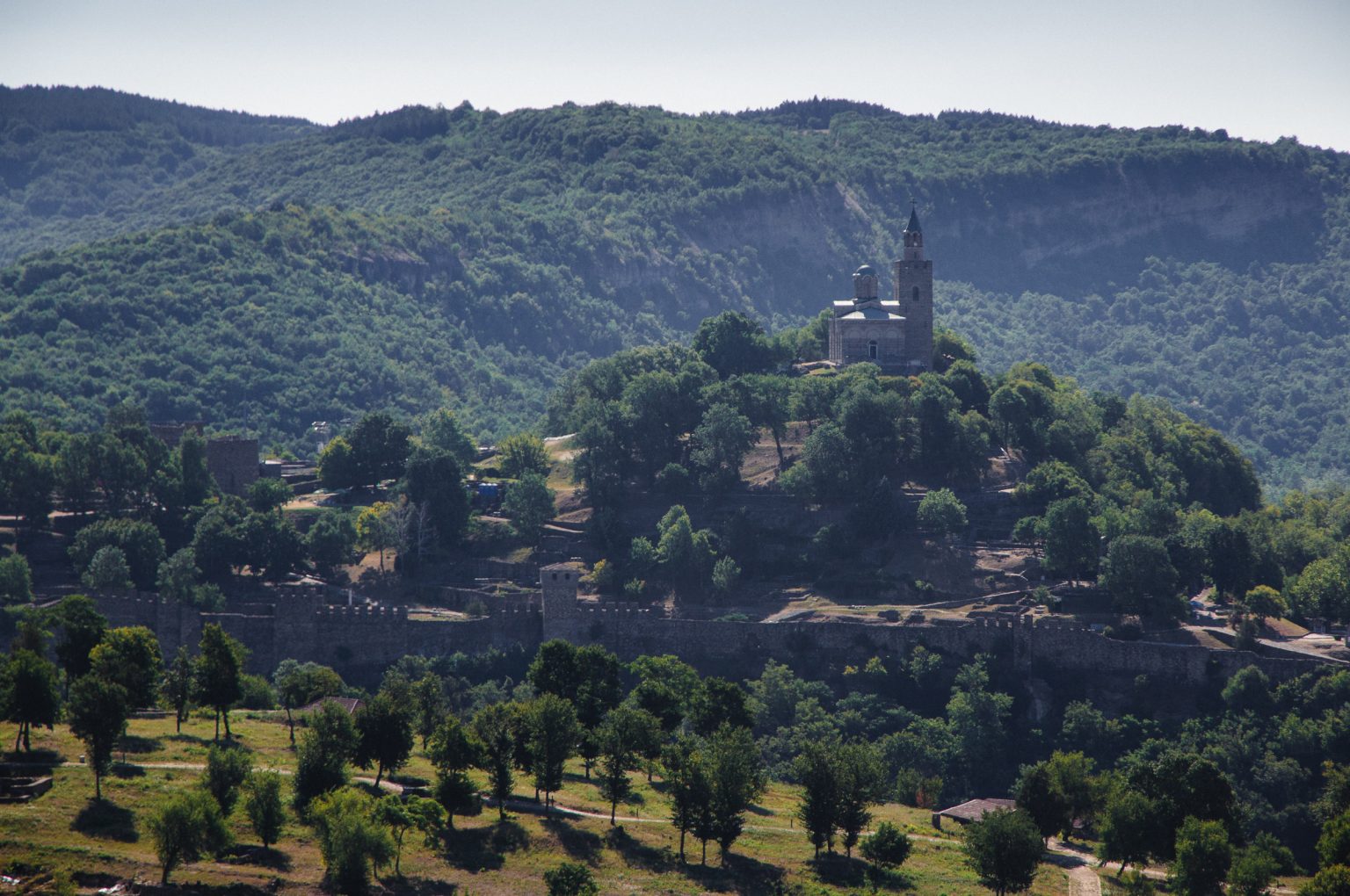
10. Ancient Theatre of Philippopolis – Plovdiv
The Ancient Theatre of Philippopolis in Plovdiv dates back to the 1st century AD and is one of the best-preserved Roman theatres in the world. It is still used for concerts and performances today, especially during the summer months.
Located in Plovdiv’s Old Town, the theatre is easy to visit as part of a walking tour of the area. Entry requires a fee, but the site is small and typically takes no more than half an hour to explore – unless you’re attending an event.
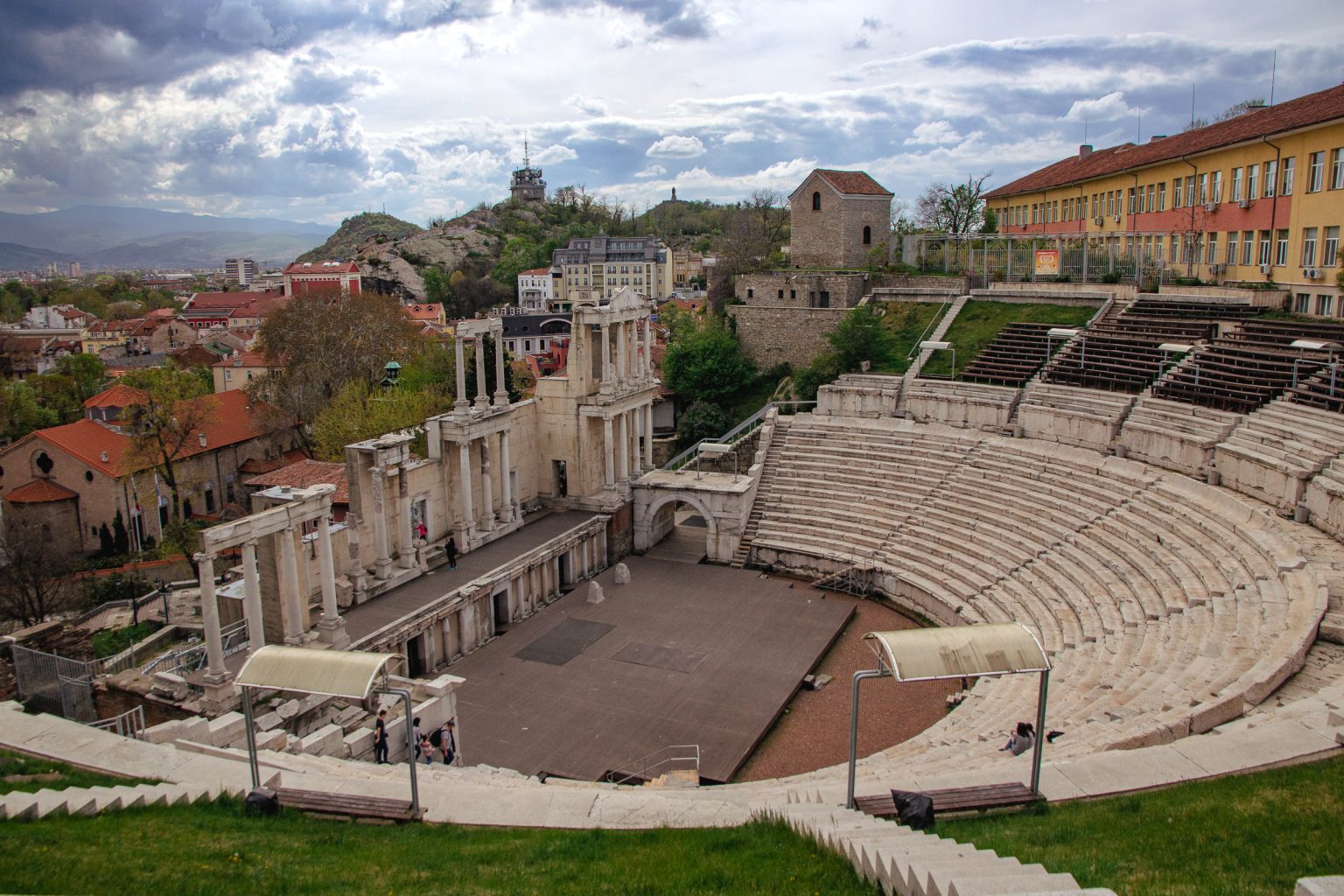
11. Shipka Monument
The Shipka Monument is probably the most popular monument in Bulgaria. It’s located on Shipka Peak in the Balkan Mountains and was built to honor the Bulgarian and Russian soldiers who fought in the battles there during the Russo-Turkish War. Every year on March 3rd, hundreds of Bulgarians visit to celebrate Bulgaria’s National Liberation Day.
The monument is truly impressive and gives you chills when you see it up close. It’s shaped like a tower, guarded by a massive 12-ton bronze lion facing east. Inside, there’s a small museum and ossuary. Climb the narrow stairs to reach a fantastic panoramic view from the top.
If you’re traveling alone or with family, the easiest way to get there is by car. Once you arrive, you can park in the dedicated parking area and climb the stairs up to the monument. There is a small entrance fee.
While you’re in the area, make sure to set aside time to visit Buzludzha as well (see below).

12. Buzludzha Monument
The Buzludzha Monument is a large, abandoned communist-era building located on Buzludzha Peak. Completed in 1981, it served as a political museum and a site for ritual events until the political changes of 1989, after which it was abandoned.
Today, the monument is closed for safety reasons, but you can still visit and admire its exterior. In 2018, it was recognized by Europa Nostra – the largest European cultural heritage organization – as one of the seven most endangered cultural sites in Europe.
The structure is often photographed because of its impressive design, and the road leading to it is in decent condition during the summer.
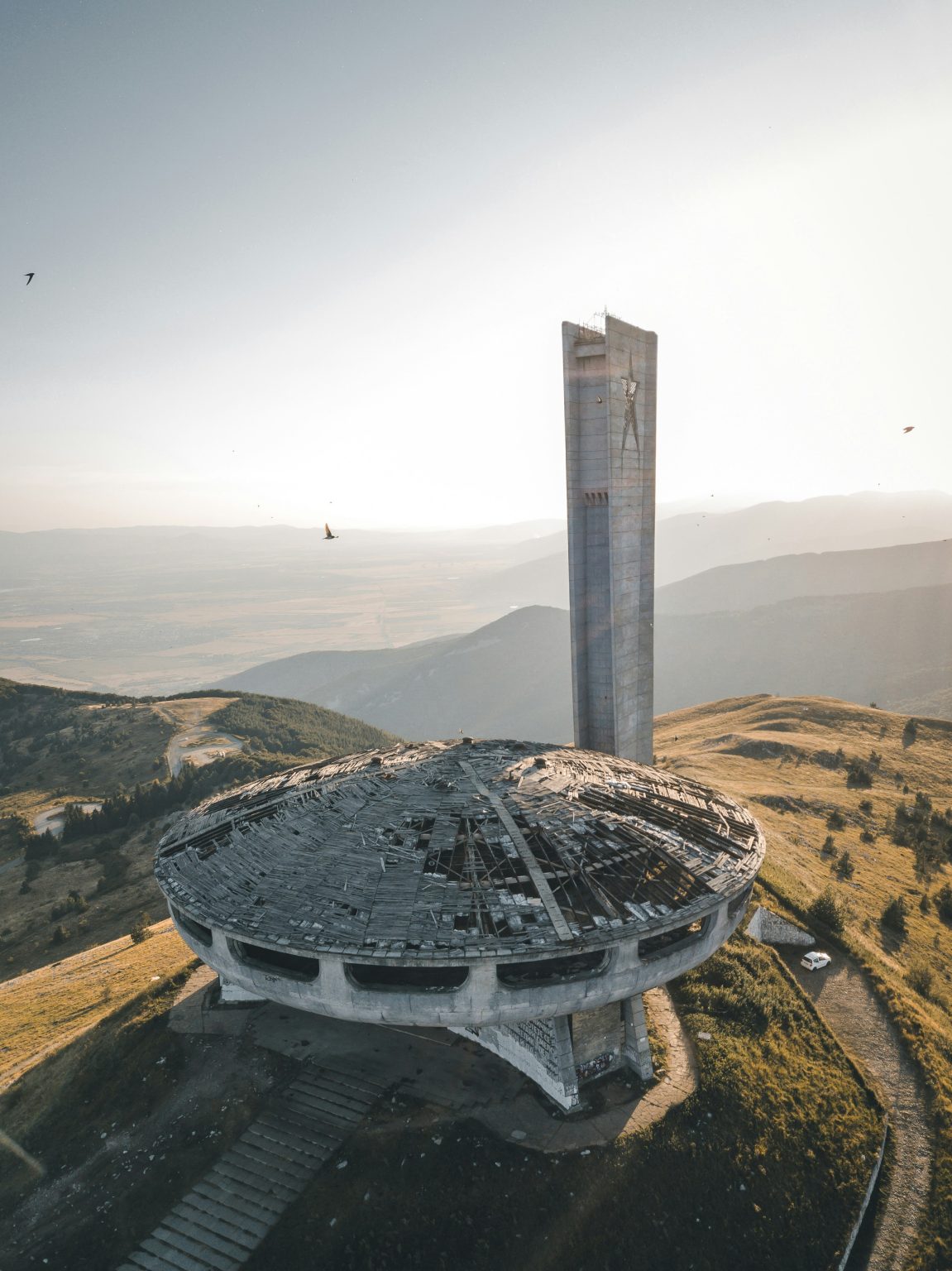
13. Statue of Liberty – Ruse
The Statue of Liberty is a 17-meter-tall monument of a woman holding a sword in one hand and pointing north with the other. Located in Ruse, it’s a local landmark that stands in the city’s main square. The statue was erected in 1909 to honor those who died for Bulgaria’s liberation.
The monument is symbolic for the city and often used as a meeting point. The surrounding area is pedestrianized and filled with restaurants, museums, and historical buildings from the Austro-Hungarian architectural period.
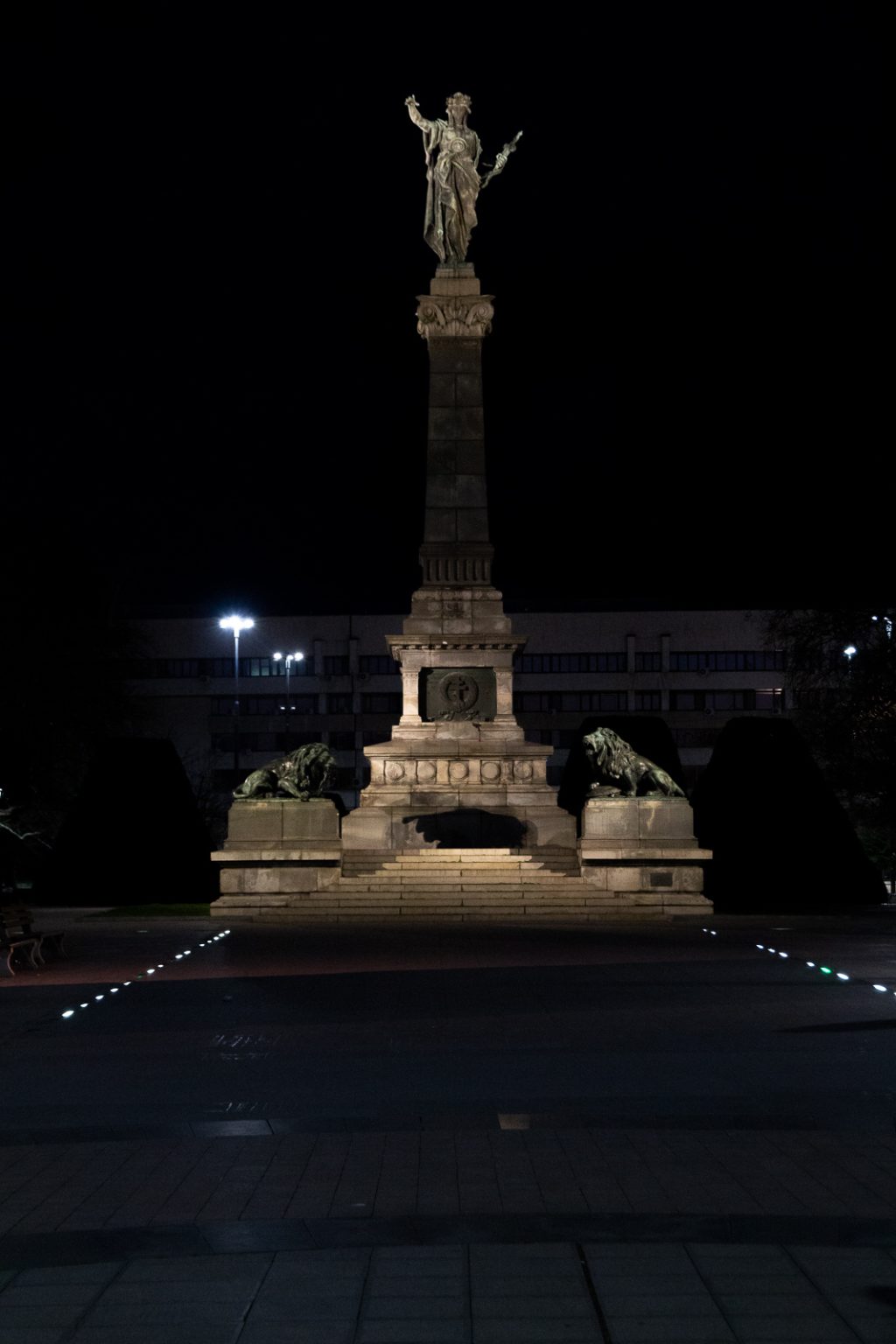
14. Danube Bridge (Ruse-Giurgiu Friendship Bridge)
The Danube Bridge crosses the Danube River, connecting the Bulgarian city of Ruse with Giurgiu in Romania. Opened in 1954, it is the oldest of only two bridges spanning the Danube between the two countries.
The bridge carries both road and rail traffic. While not a tourist attraction in the traditional sense, it is historically important and still fully operational. There’s no pedestrian access or place to stop, but if you’re crossing the border here, you’ll be traveling over it.
15. Founders of the Bulgarian State Monument – 1300 Years of Bulgaria – Shumen
The Founders of the Bulgarian State is probably my favorite monument. Built in 1981, it marks 1,300 years since the establishment of the Bulgarian state and can be seen from very, very far away.
Located on a plateau above Shumen, it consists of massive concrete figures representing key figures and events from Bulgaria’s early history. The monument is often called “the transformers” because of its brutalist style, which is very different from typical monuments.
The site is open to the public and requires a ticket. There’s also a panoramic terrace offering views of the city and the surrounding plains. The whole structure’s brutalist design makes it one of the most unusual historical monuments in Bulgaria.
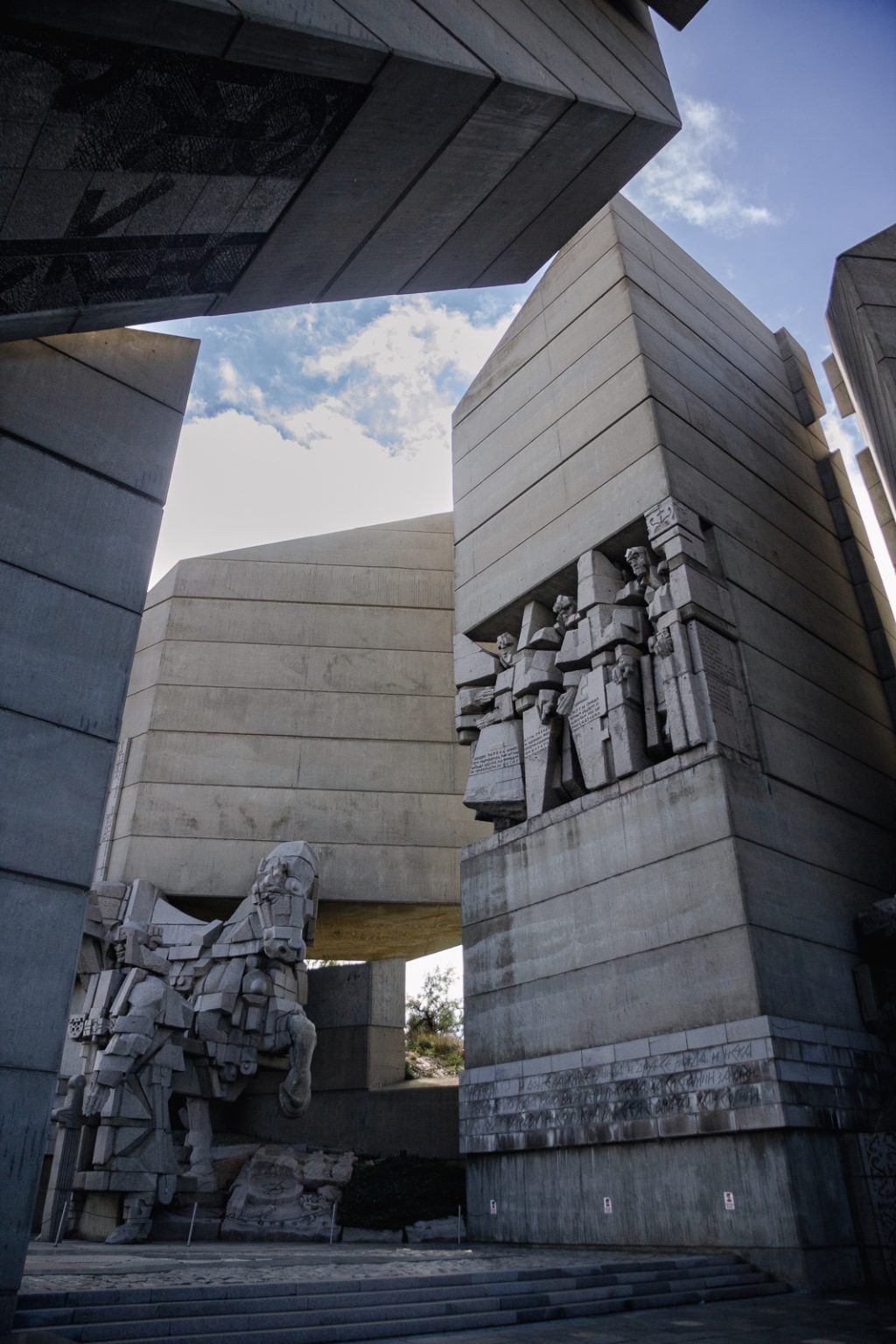
Religious Landmarks
Religious landmarks in Bulgaria are often found in scenic or remote areas. Most are still active and visited by both tourists and worshippers. Keep in mind you need to dress modestly and keep quiet when entering active churches or monasteries.
16. Rila Monastery
Rila Monastery is the largest and most visited monastery in Bulgaria and a UNESCO World Heritage Site. It’s located in the Rila Mountains, about two hours from Sofia by car, and close enough to the Seven Rila Lakes mentioned above to combine both sites in your trip.
The monastery was founded in the first half of the 10th century by Saint Ivan of Rila and has played a crucial role in preserving Bulgarian culture and language during the Ottoman period.
Not all exhibitions are open to visitors, but those that are require a small fee. There is a combined ticket for all exhibitions, which can save you some money.
You can reach the monastery only by car or organized transport, as there is no public transport available.
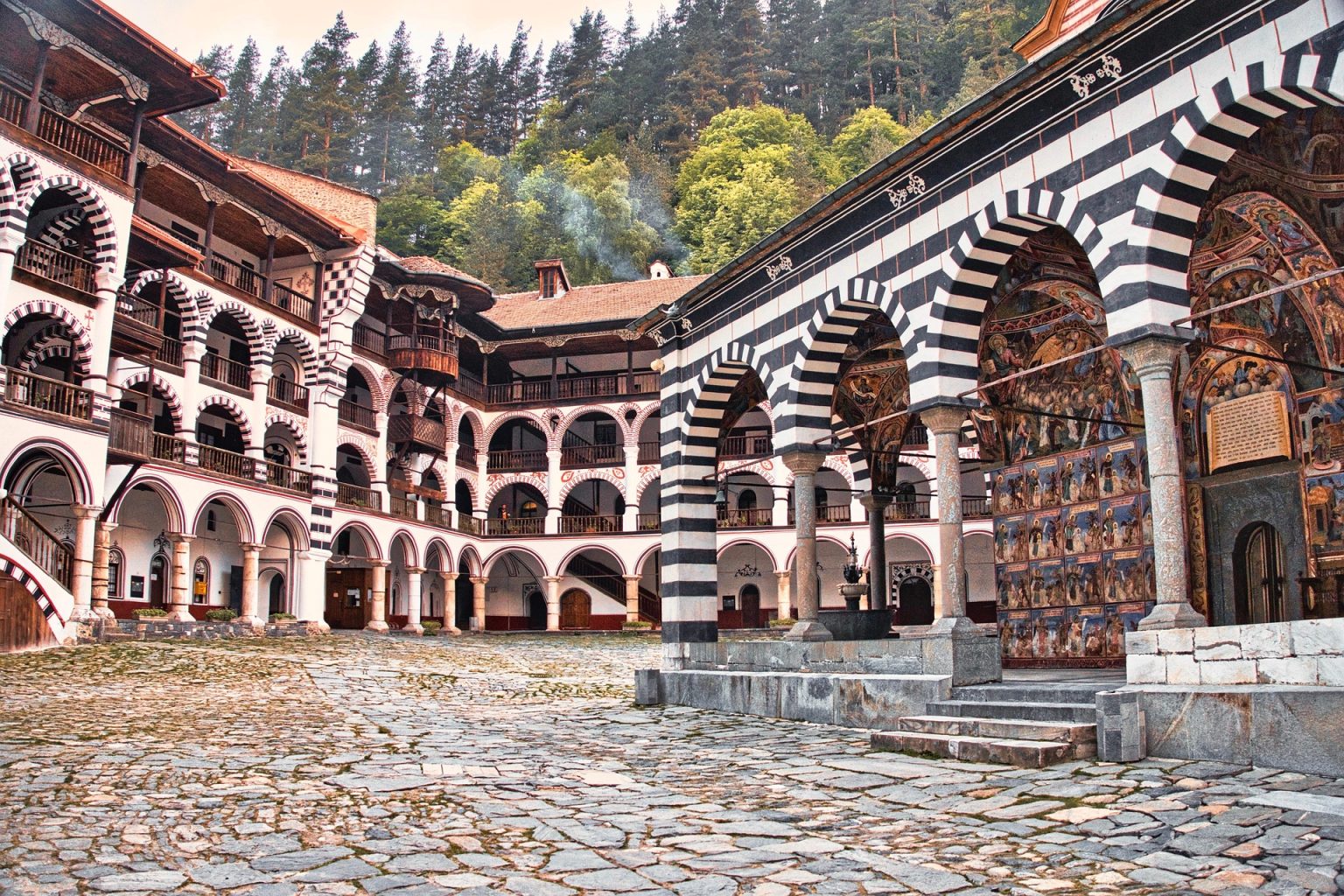
17. Bachkovo Monastery
Bachkovo Monastery is located near Asenovgrad, in the Rhodope Mountains. Founded in the 11th century, it is the second largest monastery in Bulgaria and a national cultural monument.
The site is well known for its well-preserved frescoes, especially in the ossuary and the main church. The monastery is active, with services held regularly.
Entry is free, and photography is allowed outside the churches. There are small shops and restaurants nearby, and it’s easy to reach by car or public transport from Plovdiv.
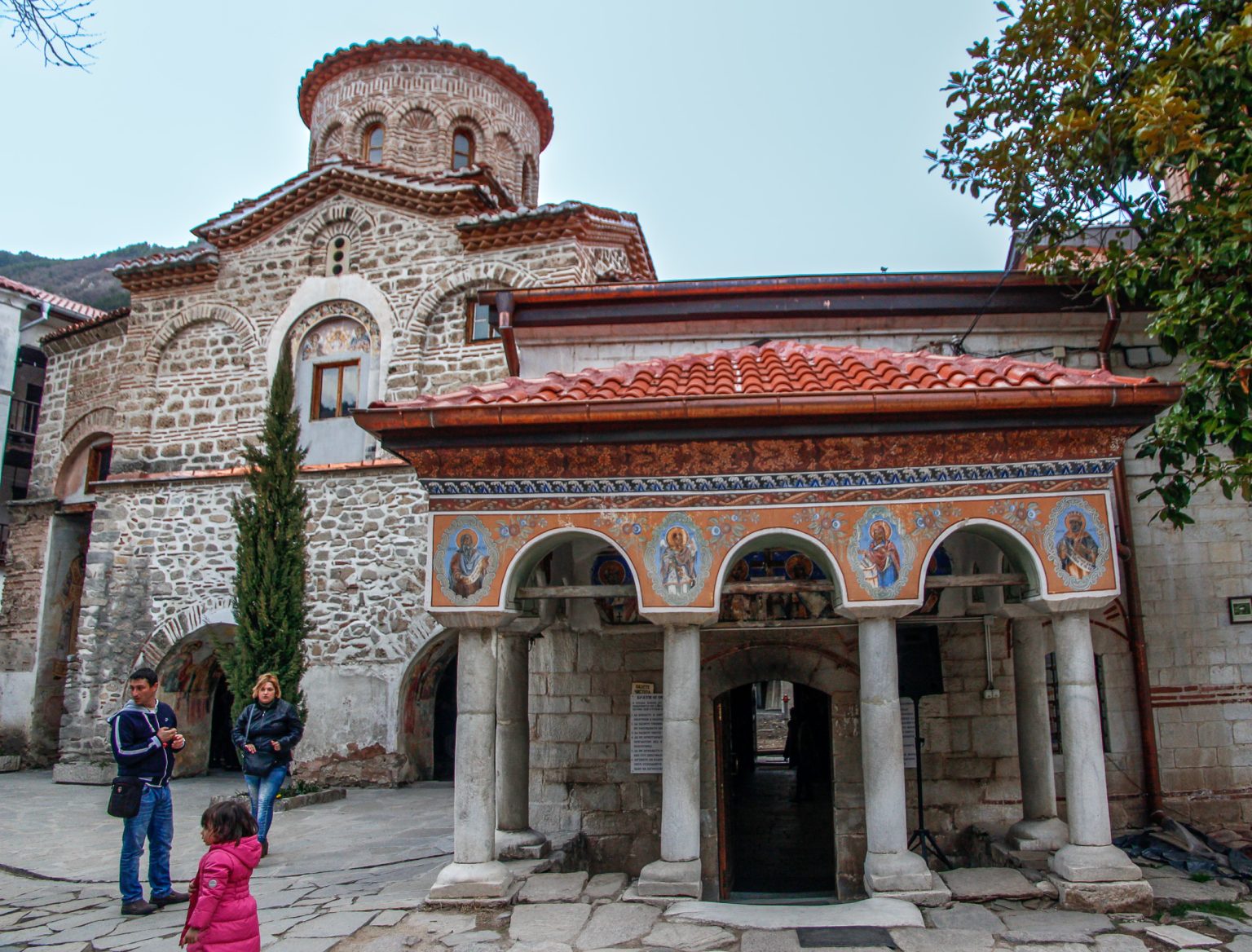
Free map of Bulgaria’s landmarks
Get a free map of Bulgaria’s landmarks! Just click on the map below and save the list into your own account. Enjoy!
If you think there’s a landmark I missed or want to share your take on this topic, please leave a comment below!
FAQs
What is the most famous landmark in Bulgaria?
One of the most famous landmarks in Bulgaria is the Rila Monastery. It’s a large and active monastery in the Rila Mountains, known for its history, architecture, and importance in Bulgarian culture. It’s also a UNESCO World Heritage Site and one of the most visited places in the country.
What are the top 3 most interesting landmarks in Bulgaria?
That depends on what you’re interested in, but three of the most commonly mentioned ones are the Rila Monastery, the Tsarevets Fortress and the Belogradchik Rocks.
Are Bulgaria’s landmarks easy to visit without a guide?
Generally speaking – yes. However, keep in mind that public transport in Bulgaria is not well developed, so if you don’t want to participate in an organized tour, it would be best to rent a car so you can access them.
Is there an entrance fee to visit landmarks in Bulgaria?
It depends. Many landmarks are free to visit, especially natural sites and public monuments. Some historical or religious landmarks charge a small entrance fee, usually under 10 BGN. Fees are generally posted at the entrance and often include access to small museums or panoramic areas.
What’s the best time of year to explore Bulgaria’s landmarks?
Spring through early autumn (April to October) is the best time. Most sites are fully open, the weather is stable, and mountain roads are accessible.
Stefani Gospodinova
Founder and Content Creator
Stefani is a travel blogger born and raised in Bulgaria, and the founder of Kiss My Backpack. Having explored the country since childhood, she shares practical tips, local insights, and her own photography to help visitors plan their trip.
Latest blog posts
Nessebar is one of those places that sneaks up on you - it’s small, charming, and packed with things to see and do. From churches and cobbled streets to boat trips and wine tastings, here’s why you should add it to your Black Sea travel plans.
Looking for a day trip that mixes history with seaside charm? Nessebar Old Town has it all - ancient churches, cobbled streets, sea views, and plenty of cozy spots to eat and wander.
In this guide, I’ll walk you through the top spa and wellness hotels in Burgas, what makes each one special, and how you can also experience the healing mineral waters of the historic Aquae Calidae - one of the most unique things to do in Burgas.
Slow down and let Burgas show you its magic. From seaside strolls and island escapes to birdwatching, water sports, and day trips into Strandzha’s wild heart - here are 21+ ways to experience Bulgaria’s Black Sea city like a local.

